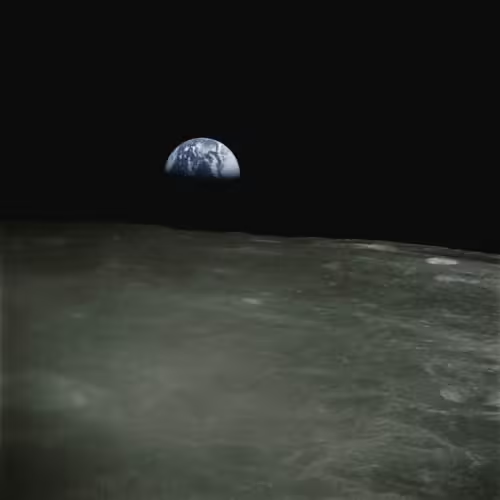ESA’s Space Missions : Have you ever pondered what drives ESA’s relentless pursuit of the cosmos?
As humanity’s grasp extends beyond the comforting embrace of our terrestrial home, questions arise about what lies in the inky, star-speckled expanses of space. The European Space Agency (ESA) stands at the forefront of this endeavor, pushing boundaries and exploring unknown frontiers. This intricate tapestry of space exploration invites us to understand the intentions, successes, and implications of ESA’s missions. Similarly, it underscores the relevance of space exploration in current technological advancements and cultivates public interest in science.

This image is property of images.unsplash.com.
Table of Contents
Introduction to ESA’s Space Missions
In the rapidly evolving 21st century, the exploration of space has shifted from being a mere curiosity to an essential element of scientific advancement. The ESA plays a prominent role in this exploration, aiming to expand human knowledge and secure the future of space endeavors. By navigating through various projects and missions, ESA contributes vital data and technological innovation that benefit life on Earth and beyond.
Historical Context of ESA’s Exploration
ESA, established in 1975, emerged from an amalgamation of European countries striving to compete on the global space exploration stage. Initially, it focused on scientific research, developing launch systems, and cultivating international cooperation. Early missions laid the groundwork for today’s sophisticated expeditions.
These efforts began with collaborative human spaceflight initiatives like the manned Hermes project, which evolved into contributions to the International Space Station (ISS). ESA’s pioneering spirit also extended to launching satellite missions for telecommunications, earth observation, and navigation.
Current Trends and Developments in ESA’s Missions
Today, ESA embarks on multifaceted missions that address key aspects of space science and technology. Prominent among these are ventures related to planetary exploration, astrophysics, and climate monitoring. ESA missions such as Rosetta and Mars Express exemplify the successful discovery-driven philosophy behind their operations.
Rosetta Mission
Launched in 2004, the Rosetta mission journeyed to comet 67P/Churyumov-Gerasimenko, achieving a historic first by landing a robotic probe on a comet’s surface. This mission advanced our understanding of these ancient cosmic bodies, revealing insights into the primordial materials that formed planets and life.
Mars Express
Orbital exploration by Mars Express since 2003 has unveiled significant findings about the Red Planet, pushing forward the frontier of Martian knowledge. It facilitated the discovery of water ice, analyzing atmospheric constituents crucial for future human missions, and refining models of Mars’ volcanic and climatic history.
Open Access and Clean Space Initiatives
As scientific knowledge grows, accessibility becomes paramount. ESA’s Open Access policy endeavors to provide unrestricted access to its research, fostering global collaboration. This shift not only democratizes space data for educational and commercial use but also supports diverse scientific communities worldwide.
Furthermore, ESA addresses the looming threat of space debris through its Clean Space initiative, aiming to minimize space pollution and ensure sustainable exploration. Its focus on designing missions that avoid leaving debris in orbit exemplifies responsible stewardship of outer space.

This image is property of images.unsplash.com.
Impact Assessment: Multifaceted Outcomes of ESA’s Ventures
ESA’s missions profoundly impact various sectors, from science and technology to international collaboration and public awareness. By generating invaluable data, ESA enhances Earth’s environmental monitoring capabilities, supports technological innovation, and fuels collaborations that transcend political borders.
Future Directions and the Horizon of Space Exploration
Looking ahead, ESA plans to intensify its efforts in exploring dynamic areas of potential discovery such as lunar exploration and exoplanet research. The upcoming JUICE mission aims to study Jupiter’s satellites, offering insights into the potential habitability of icy moons like Europa.
In parallel, the Ariane 6 launch vehicle stands at the cusp of redefining Europe’s capability to deploy payloads into various orbits, marking a new era in satellite and spacecraft deployment efficiency.

This image is property of images.unsplash.com.
Implications of Space Exploration for Society
Space exploration’s horizon extends far beyond mere scientific curiosity; it significantly impacts global society. From fostering technological innovations that trickle down to everyday applications to inspiring new generations to pursue scientific careers, the implications of ESA’s ventures resonate deeply.
Moving forward, the role of collaborative international space missions will become progressively vital, with potential socioeconomic benefits and shared global knowledge resulting from such partnerships.
Conclusion
Summarizing today’s exploration of ESA’s space missions, we recognize the ability of these remarkable ventures to ignite curiosity and foster a spirit of discovery among us. The findings gathered not only redefine our place in the universe but also contribute to technological and environmental advances on Earth. As ESA ventures deeper into space, their missions symbolize humanity’s enduring quest for knowledge and collective aspiration to explore beyond our planet. What do you anticipate will be the next groundbreaking ESA mission, and how will it shape our understanding of the universe?
This exploration beckons you to delve deeper into the intriguing world of ESA’s efforts in unraveling the mysteries of space. Stay informed and connected with their ongoing initiatives for a glimpse into the boundless frontiers awaiting exploration.


